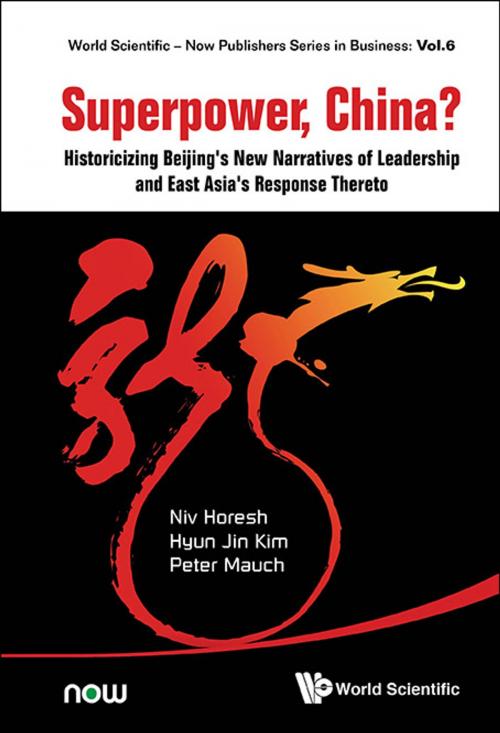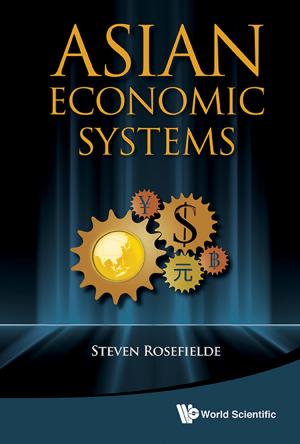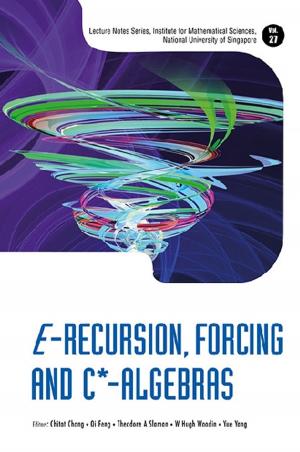Superpower, China?
Historicizing Beijing's New Narratives of Leadership and East Asia's Response Thereto
Nonfiction, Social & Cultural Studies, Political Science, International, International Relations| Author: | Niv Horesh, Hyun Jin Kim, Peter Mauch | ISBN: | 9789814619172 |
| Publisher: | World Scientific Publishing Company | Publication: | October 27, 2014 |
| Imprint: | WSPC/NOW | Language: | English |
| Author: | Niv Horesh, Hyun Jin Kim, Peter Mauch |
| ISBN: | 9789814619172 |
| Publisher: | World Scientific Publishing Company |
| Publication: | October 27, 2014 |
| Imprint: | WSPC/NOW |
| Language: | English |
This book sets out to answer how China's rise can best be understood from both East Asian and Western perspectives. It also assesses the prospect of realignment away from the US hegemony in East Asia in light of persistent regional rivalries. Throughout the book, the authors show that for China's neighbours, as well as for its own intellectuals, historicizing the country's rise provides one way of understanding its current ascendant trajectory, on the one hand, and acute social problems, on the other.
To which historical precedent should one turn? Did Japanese Prime Minister Abe Shinzo get it right when he recently likened the contemporary Sino-Japanese relationship to that of Germany and Britain on the eve of World War I? Is Harvard Law School's Noah Feldman correct in his assertion that China and the United States are on the verge not of a Cold War but of a “Cool War,” in which a “classic struggle for power is unfolding at the same time as economic cooperation is becoming deeper? The authors examine these questions and also focus on other observations that becloud China's rise.
Contents:
- Introduction
- Was There a Pre-Modern or Early-Modern "China Model"?
- How Unique Is Today's "China Model"
- Beyond Lu Xun: A Critique of Chinese Exceptionality, Meritocracy, and Historicity as Conceived in Wang Hui's Thought
- Beyond Tianxia: Chinese Historicity, Meritocracy, and Exceptionality in Yan Xuetong's, Hu Angang's, and Pan Wei's Thought
- "Seoul Searching": The History, Politics, and Prejudice behind the Re-naming of the Korea's Capital in Chinese
- Is My Rival's Rival a Friend? Popular Third-Party Perceptions of Territorial Disputes in East Asia
- Conclusions
Readership: Graduates and researchers specializing in China Studies; international relations specialists.
Key Features:
- One of few books to study how Japanese and Koreans of various political persuasions — and how historians more broadly — envision China's nascent claim to global leadership
- Sets out to answer how China's rise can best be understood from both East Asian and Western perspectives
- Assesses the prospect of realignment away from the US hegemony in East Asia in light of persistent regional rivalries
This book sets out to answer how China's rise can best be understood from both East Asian and Western perspectives. It also assesses the prospect of realignment away from the US hegemony in East Asia in light of persistent regional rivalries. Throughout the book, the authors show that for China's neighbours, as well as for its own intellectuals, historicizing the country's rise provides one way of understanding its current ascendant trajectory, on the one hand, and acute social problems, on the other.
To which historical precedent should one turn? Did Japanese Prime Minister Abe Shinzo get it right when he recently likened the contemporary Sino-Japanese relationship to that of Germany and Britain on the eve of World War I? Is Harvard Law School's Noah Feldman correct in his assertion that China and the United States are on the verge not of a Cold War but of a “Cool War,” in which a “classic struggle for power is unfolding at the same time as economic cooperation is becoming deeper? The authors examine these questions and also focus on other observations that becloud China's rise.
Contents:
- Introduction
- Was There a Pre-Modern or Early-Modern "China Model"?
- How Unique Is Today's "China Model"
- Beyond Lu Xun: A Critique of Chinese Exceptionality, Meritocracy, and Historicity as Conceived in Wang Hui's Thought
- Beyond Tianxia: Chinese Historicity, Meritocracy, and Exceptionality in Yan Xuetong's, Hu Angang's, and Pan Wei's Thought
- "Seoul Searching": The History, Politics, and Prejudice behind the Re-naming of the Korea's Capital in Chinese
- Is My Rival's Rival a Friend? Popular Third-Party Perceptions of Territorial Disputes in East Asia
- Conclusions
Readership: Graduates and researchers specializing in China Studies; international relations specialists.
Key Features:
- One of few books to study how Japanese and Koreans of various political persuasions — and how historians more broadly — envision China's nascent claim to global leadership
- Sets out to answer how China's rise can best be understood from both East Asian and Western perspectives
- Assesses the prospect of realignment away from the US hegemony in East Asia in light of persistent regional rivalries















